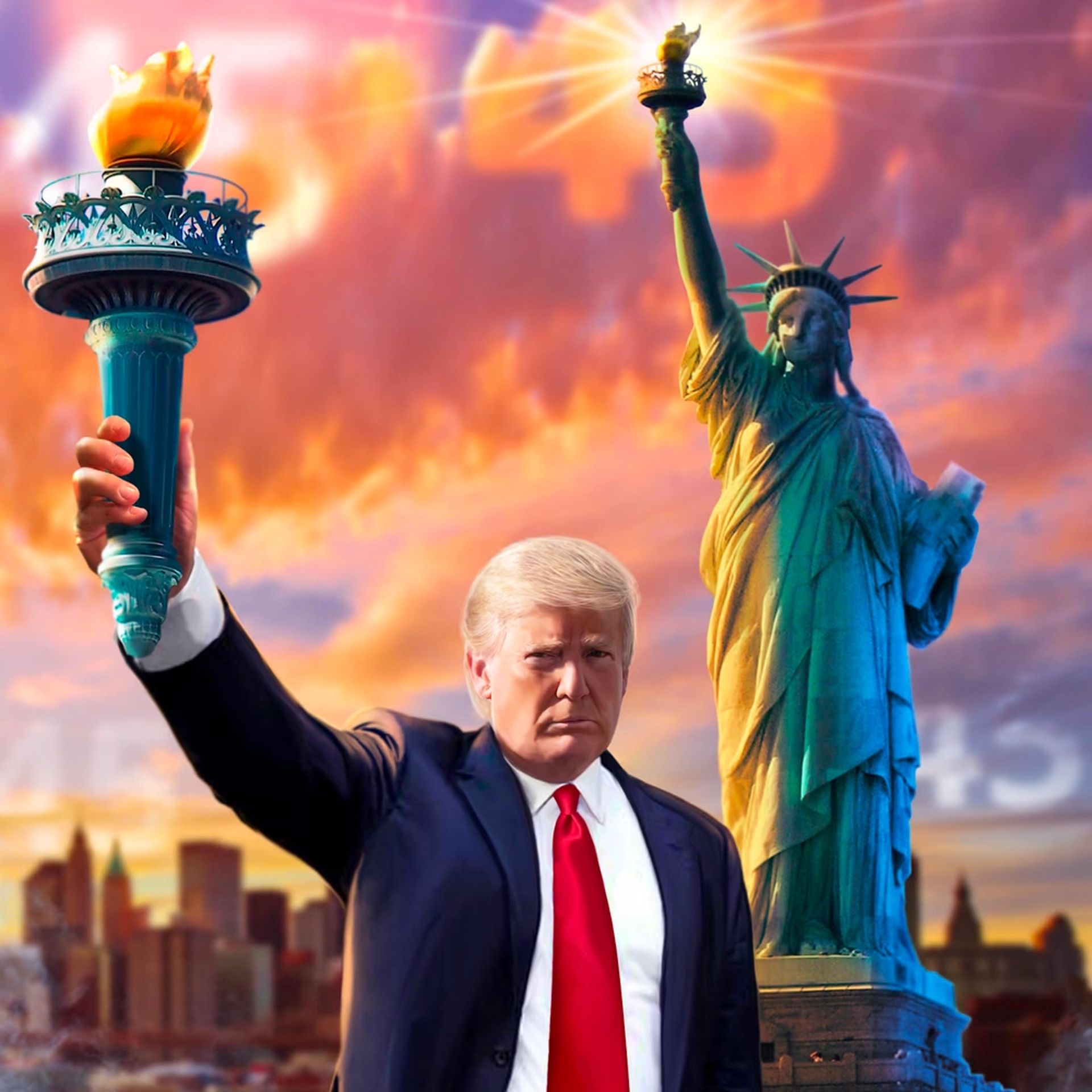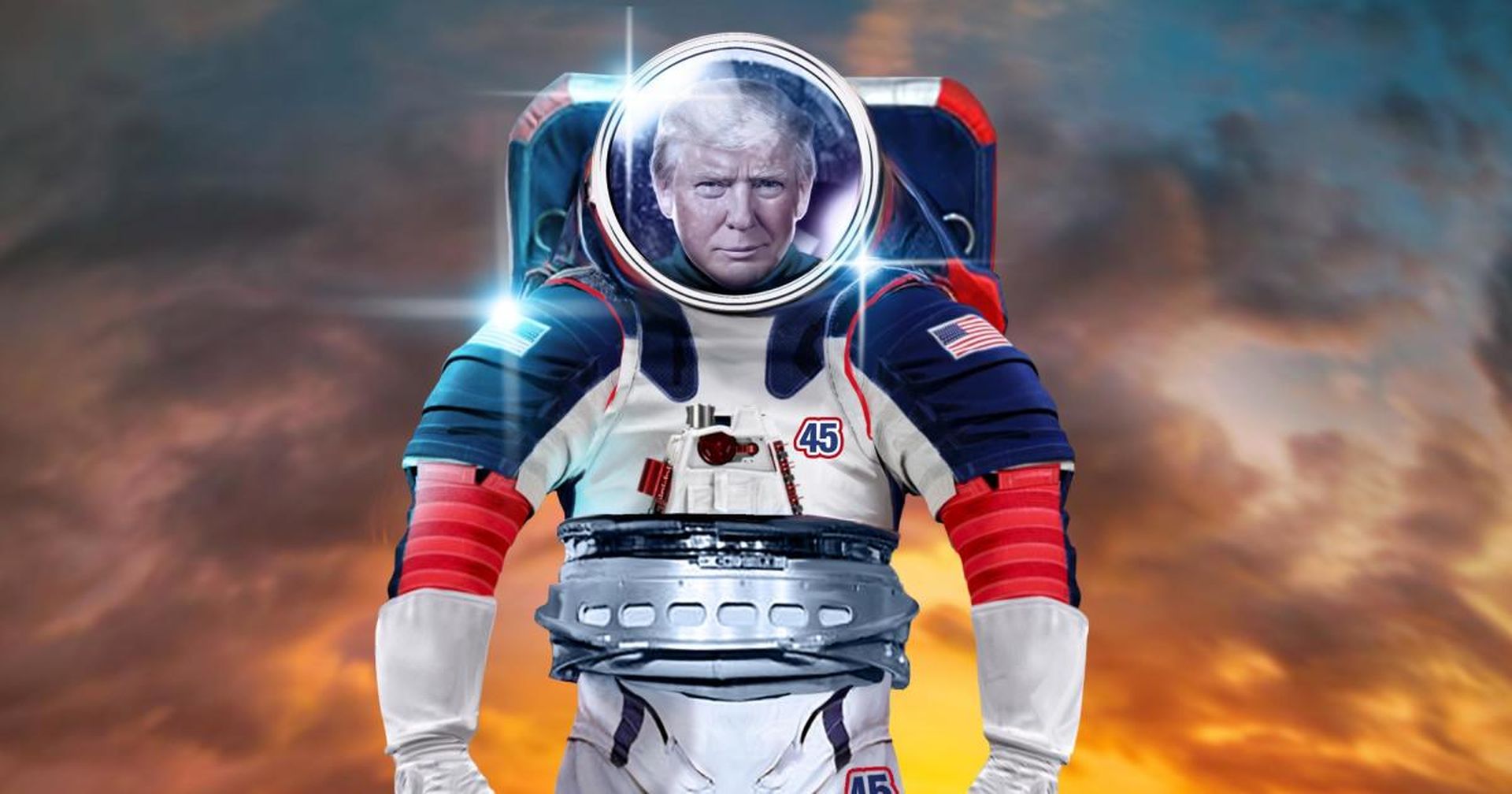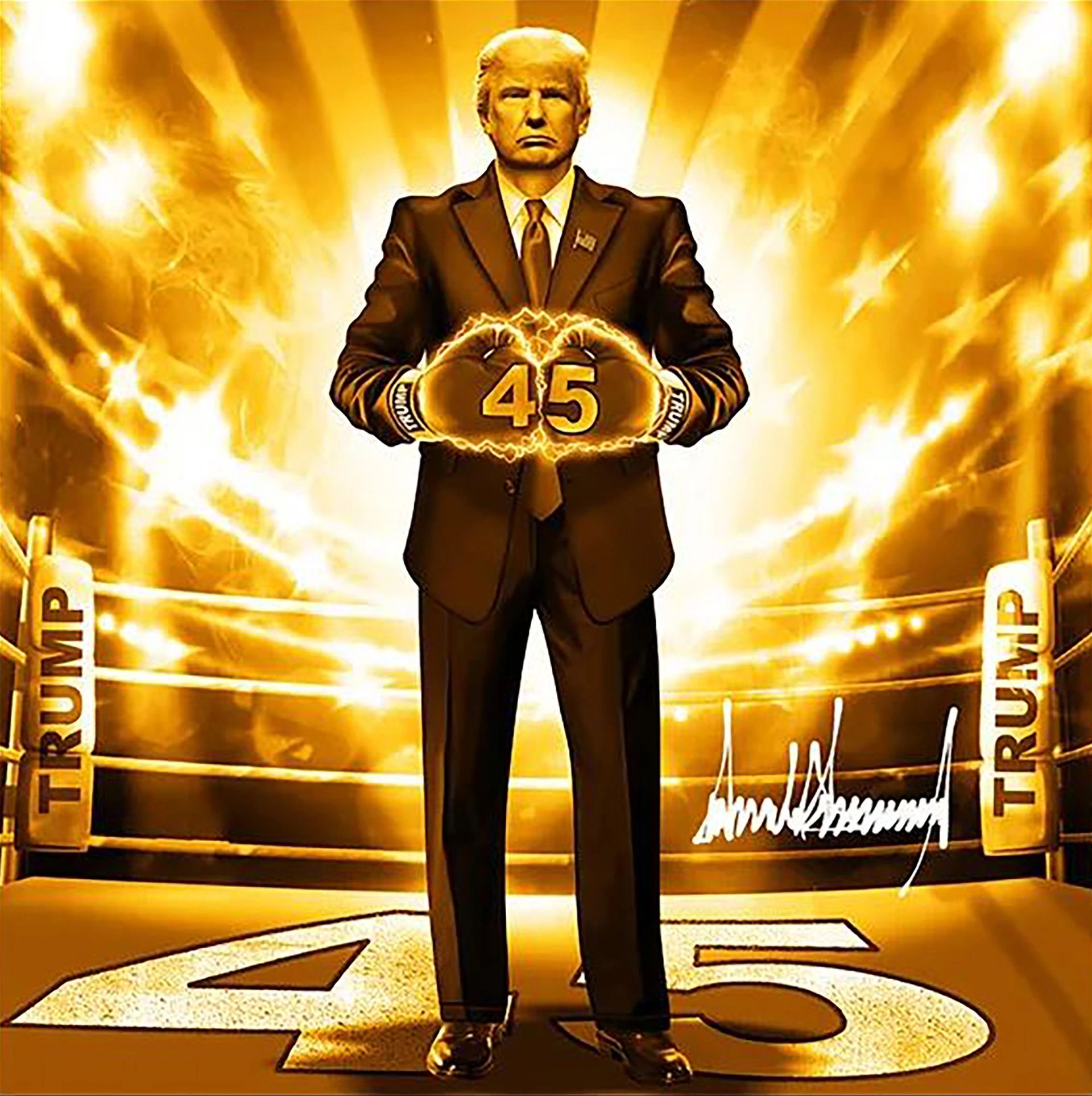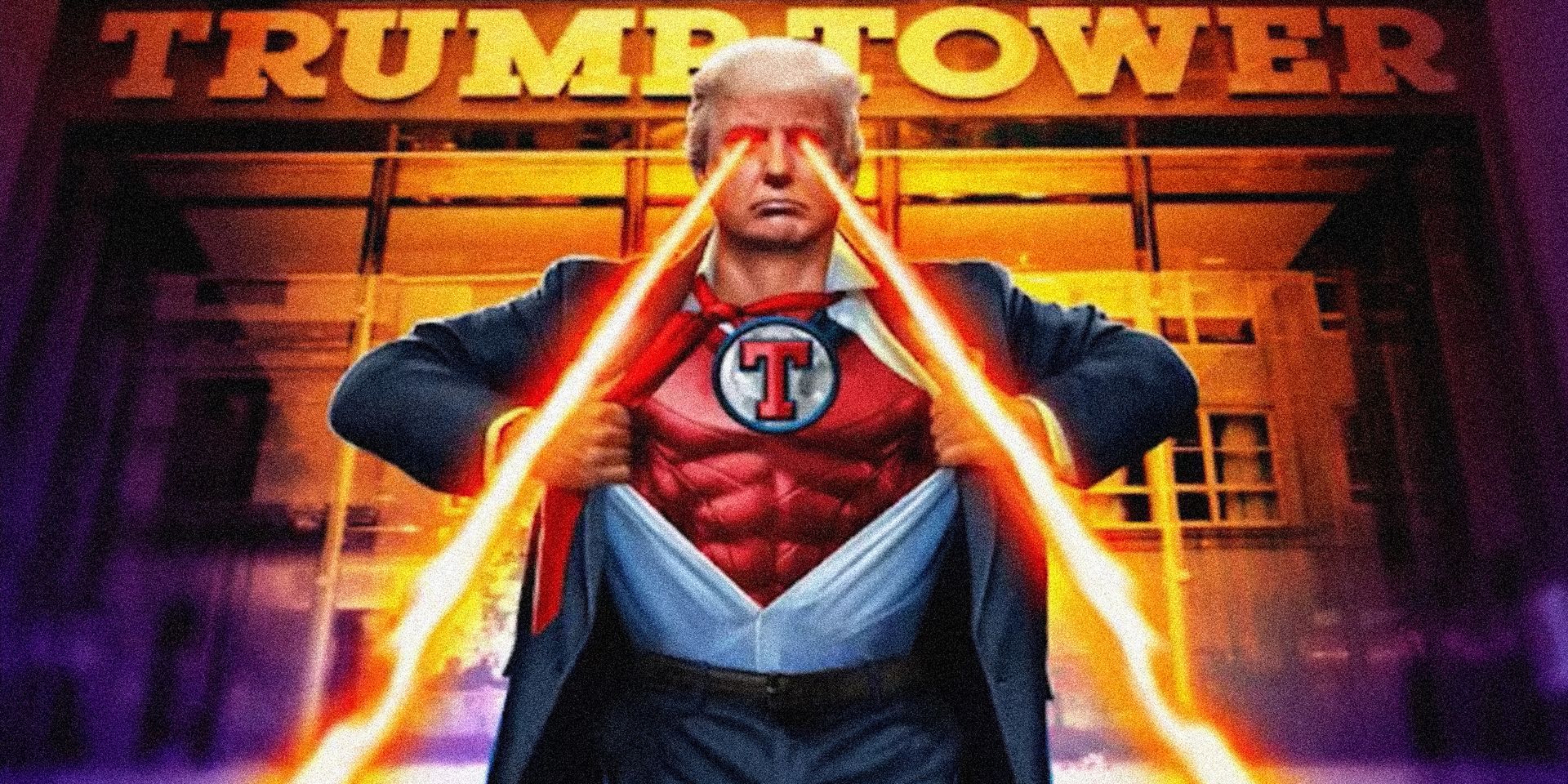Saturday Night Live’s broadcast from past weekend opened with a joke on former president Donald Trump’s just-released non-fugible token (NFT) collection. In the past twenty-four hours, the value of Donald Trump’s collection of nonfungible tokens crashed by over fifty percent.
James Austin Johnson, who played the 45th president in the show’s opening, stated: “Seems like a scam and, in many ways, it is.”
At the time of publication, OpenSea data indicates that the collection’s trade volume is 6,658 ETH, or approximately $7.8 million. Its initial floor price of $99 has been hovering at 0.3 ETH, or $350.
The series includes 45,000 baseball card-inspired tokens. In each collection, Trump wears a different costume tied to rarity aspects that allow users to enter a sweepstakes for the chance to win rewards like as a zoom call with the President or a cocktail hour at Mar-a-Lago.

Netizens have probed deep into the project and the people behind the wallet addresses associated with Trump’s memorabilia in the wake of the project’s apparent success. Among the nuances and inconsistencies asserted on Twitter are that the company that created the collectibles is hoarding a large quantity of them, that the project relies poorly on stock imagery, and that the majority of buyers opened new wallets without holding any cryptocurrency, leaving them with an NFT and no way to derive future value from it.
What happened to 1,000 NFTs?
Over the weekend, Twitter user @NFTherder saw something unusual about a huge proportion of the collection’s rarest NFTs. The user wrote a thread describing the nature of the transactional data for the contracts linked with the mint.
Polyscan, Polygon’s version of Etherscan, reveals that a “Donald Trump Admin” wallet sent 1,000 tokens to a Gnosis Safe Wallet, a multisignature smart contract wallet that needs a small number of users affiliated with the tokens to approve of any asset movement.

While the Collect Trump Cards website indicated that 44,000 of the original series’ 45,000 tokens would be available for minting, it did not define what would happen to the remaining 1,000 tokens. The data indicates that the administrative wallet has the remaining 1,000 tokens, whilst another project might save these assets for a later date to reignite demand.
1/ Turns out Donald Trump minted a thousand of his own nfts to his vault wallet
Keeping a giant portion of the most rare nfts in his collection for himself
The 2nd minted nft was a rare 1-of-1, the chances … pic.twitter.com/3m0MQGQydp
— okHOTSHOT (@NFTherder) December 17, 2022
After the failure of Three Arrows Capital, the crypto-hedge fund backed NFT collection “Starry Night” relocated its tokens and other precious assets to a Gnosis Safe wallet. It was presumably done out of an abundance of caution to keep the assets in a single location to prevent a single actor from removing them from the wallet.
The Trump Trading Card website said that there was a “strict limit of 100 Trump Digital Trading Cards per purchaser/household,” which meant that an individual or organization that did not have to adhere by the regulations for the general public was able to acquire a significant portion of the NFT pool.
In addition, the mystery wallet does not contain inferior NFTs. According to NFTherder, it produced 26% of the rarest 1-of-1 tokens and 28% of autographed trading cards. These are the most precious and expensive assets in the collection, accounting for 0.4% and 0.16% of the total tokens.
NFTherder told CoinDesk that not only are wallet owners able to increase the price floor of the collection, but they may also be able to manipulate the sweepstakes and competition.
“If this was a 10,000 unit collection about monkeys, the whole discord would be blowing up about how this is a rug and a scam and that the team is holding one fourth of the most rare supply,” stated NFTHerder.
Strange watermarks and unknown artists
While some Twitter users were investigating the wallet addresses and collection giveaways, others were investigating pop culture digital artist Clark Mitchell and the artwork he made for the collection.
The founder of On-Chain TV, Morgan Sarkissian, posted an image of one of the souvenirs depicting the 45th president in a space outfit that appeared to bear a Shutterstock watermark.
Someone found one of the NFTs still had a watermark from shutterstock on one of the Trump NFTs pic.twitter.com/wmvAPhaRP2
— Morgan (@Helloimmorgan) December 17, 2022
In addition, she discovered an Adobe watermark on another token in the collection.
Adobe watermark by Trumps ear 💀 pic.twitter.com/jYpdG8XgpV
— Morgan (@Helloimmorgan) December 17, 2022
Other Twitter users have discovered anomalies in the artwork, with some of the creative components used to construct the collection appearing to be stock pictures or Amazon costumes.
It appears that Donald Trump's NFT image of himself as a cowboy comes from an Amazon image that was slightly altered. https://t.co/B0b2SUSbX9 pic.twitter.com/OA8L2rHw4J
— Matthew Sheffield (@mattsheffield) December 16, 2022
This is not Mitchell’s first NFT production; he has previously created artwork for Disney, Hasbro, and Marvel, among others.
According to the digital collectibles website, Web3 researcher and Twitter user @Valuemancer discovered that Mitchell also created the artwork for Sylvester Stallone’s SlyGuy NFT collection, which was never released.
It all started with an anonymous tip (thank you)
I was told that Trump's NFT project used the same artist as another project that I should check out.
That project, as it turns out, was Sylvester Stallone's own NFT collection.https://t.co/dgJjnag1eV pic.twitter.com/EBda0EjZBI
— Lumi, Valuemancer Archetype 🔮 🧙♂️ (@Valuemancer) December 19, 2022
Similar creative assets, such as sketches of the actor, were linked with admission to exclusive events, such as the Ultimate Stallone Experience, a dinner hosted by Stallone for token holders.
Users that minted Trump NFTs did not have any cryptos in their wallets to cover gas fees
Trump’s NFT collection had a big number of buyers who appeared to be new to digital collectibles, although NFT collections typically draw a variety of buyers with varying stakes in the game.
According to statistics from Dune Analytics, over 9,300 of the nearly 12,900 users that minted Trump NFTs did not have any cryptocurrency in their wallets to cover gas fees – the fee all users pay for blockchain transactions. If a holder has no MATIC or WETH balance, he is a “No Gas” holder. The Dune dashboard indicates that he cannot sell his NFT for sale until he has a positive amount in his wallet.

This indicates that 72% of buyers were likely first-time NFT purchasers.
According to Dune Analytics, the total amount of tokens held by holders with no gas is 21,420. One Twitter user suggested that this number may be frozen owing to the complex nature of trading on Polygon.
“It’s more like a 20,000 set than 45,000,” stated Tyler Warner, staff writer at Lucky Trader, on Twitter, citing the statistics as one of the reasons why trading activity for the tokens surged.
Not shitting you, but last night I onboarded one of my anti-NFT friends through the #TrumpNFT collection per his request.
My theory on why the collection is doing decent? No one knows how to sell.😂
— smokemonster (@smokemonsterLA) December 16, 2022
Back to our original question: Why Trump’s NFT collection crashed?
In a cold crypto winter where NFTs are already susceptible to market vulnerabilities, the release of successful NFT initiatives by celebrities or their financing of Web3 ventures appears encouraging.
However, when a project is implemented before all of its flaws have been ironed out, it does not serve as a vehicle for widespread acceptance. Instead, it may onboard a new user base unfamiliar with cryptocurrencies or the steps required to execute a secure purchase, monitor blockchain data for anomalies, and finance wallet transactions.
As the popularity of these initiatives continues to climb, it is essential to educate holders, investigate the specifics, and look beyond the excitement.





